South Mountain Park Plants and Animals
How would you describe the desert? If you were an artist you might pick brown, beige, and grey as your main colors for your palette. Your list of plant and animals that could be added would likely include cacti, snakes, and lizards. You might also put in a vulture flying in the distance for effect. It is the desert after all and how many plants and animals could really live in such a place? The answer is hundreds and in some cases a few of them are only found in South Mountain Park.
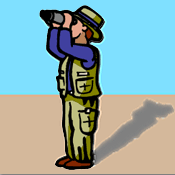
To help you with your next trip to this desert habitat we have listed a few of the plants and animals you might see while hiking. Keep in mind that some do not live here year-round.
Birds
Bird watching is best in the early morning or in the late afternoon to evening. Be sure to bring your binoculars. If you are new to bird watching, we have both beginner and advanced birding guides that you can download. They have many helpful tips for all levels of birders. Also we have our Bird Finder that you can use to identify the birds you see or to prepare you before you head out for a hike.
| Anna's Hummingbird |
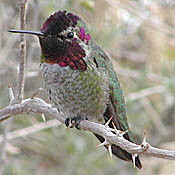
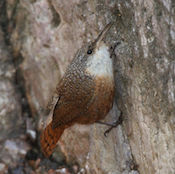
|
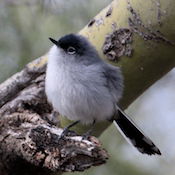
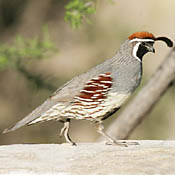
|
|
| Bendire’s Thrasher | |||
| Black-tailed Gnatcatcher | |||
| Canyon Towhee | |||
| Canyon Wren | |||
| Common Raven | |||
| Curve-billed Thrasher | |||
| Gambel's Quail | |||
| Gila Woodpecker |

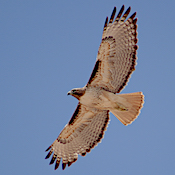
|
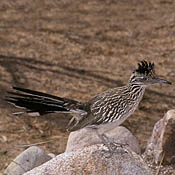

|
|
| Gilded Flicker | |||
| Great Horned Owl | |||
| Greater Roadrunner | |||
| Harris's Hawk | |||
| Red-tailed Hawk | |||
| Rock Wren | |||
| Rufous-crowned Sparrow | |||
| Scott’s Oriole (In Early Spring) |
Reptiles
When the birds take a break from the heat, you can be sure to find some reptiles to observe. Besides a collection of lizards, one of which is only found in South Mountain Park, there are the usual snakes and Gila monsters. If you keep your eyes on the boulders along the trail you should see a few of the lizards. Also be sure not to place your hand or feet anywhere you cannot see. It will help keep you from getting too close to a snake.
| Black-tailed rattlesnake |

|
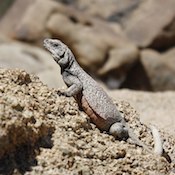 Chuckwalla Chuckwalla |
| Chuckwalla – orange-tailed (unique to South Mountain) | ||
| Coachwhip | ||
| Common side-blotched lizards |
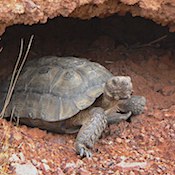
|
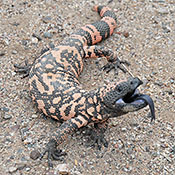
|
| Desert tortoise | ||
| Gila monster | ||
| Gophersnake | ||
| Speckled rattlesnake | ||
| Tiger whiptail lizard |
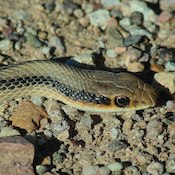 Western patch-nosed snake Western patch-nosed snake |

|
| Western diamond-backed rattlesnake | ||
| Western patch-nosed snake | ||
| Zebra-tailed lizard |
Mammals
While you might not see any of the four legged animals in the park, you might want to keep a close lookout for animal tracks and scat (poop). If you do see an animal it is likely one of these. Click to listen in as Ranger Liz Smith give you the scoop on poop:
| Bobcat |
 Bobcat Bobcat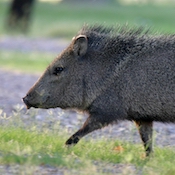 Javelina Javelina |

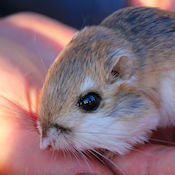 Kangaroo rat Kangaroo rat |
|
| Coyote | |||
| Gray fox | |||
| Ground squirrel | |||
| Jackrabbit | |||
| Javelina | |||
| Kangaroo rat | |||
| Mule deer | |||
| Pocket mouse | |||
| Ringtail cat | |||
| White-throated woodrat |
Insects, Spiders and Arthropods
Yes, there are insects in the desert. Some of them fly, others walk along the ground. All have six legs. The spiders in the desert, like everywhere else have eight legs. The arthropods have many legs. In the park especially after a rainstorm you might see millipedes that have many legs and can be quite long (up to 10 inches). Many people mistake the millipede for the centipede which is venomous. If you come across a millipede, you can leave it alone. It will not harm anyone.
 |
| After a rainstorm the millipedes come out. These arthropods are not venomous, but some can make a fluid that irritates the skin. So it's best to leave them alone. |
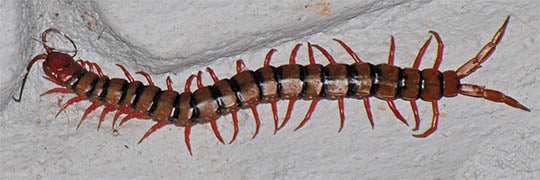 |
| Unlike the millipede the centipede has a flat head, with a pair a front facing antennae, and two wicked looking pinchers called maxillae. Some of these are venomous. |
Plant Life
Not to be out done by the animals, many plants also live in the park. Some can be seen from all parts of the trail, others are more common in the desert washes where they can count on a regular supply of water. And all it takes is a few days of rains and South Mountain will show off its wildflowers. If you want to increase your chances of finding these plants, it is best to stick to the north facing hillsides.
| Cacti |
Saguaro Cactus
|
|
| Barrels | ||
| Cholla | ||
| Hedgehog | ||
| Ocotillo | ||
| Pincushion | ||
| Prickly pear | ||
| Saguaro | ||
| Creosote bush | ||
| Elephant tree | ||
| Green-barked | ||
| Mexican gold poppie | ||
| Orange-flowered globe mallow | ||
| Palo verde trees | ||
| Purple lupine | ||
| Yellow-flowered brittlebush |
Additional images via Wikimedia Commons. Black-tailed gnatcatcher and Bobcat by Dominic Sherony. Canyon wren by Gary L. Clark. Red-tailed hawk by Alan Vernon. Desert tortoise by Lake Mead NRA Public Affairs. Black-tailed rattlesnake by HarmonyonPlanetEarth. Patchnosed snake by Alan Schmierer. Javelina by Wing-Chi Poon. Kangaroo rat by Connor Long.
Read more about: Walk in the Park
Bibliographic details:
- Article: Desert Plants and Animals
- Author(s): Dr. Biology
- Publisher: Arizona State University School of Life Sciences Ask A Biologist
- Site name: ASU - Ask A Biologist
- Date published:
- Date accessed:
- Link: https://askabiologist.asu.edu/plants-and-animals-desert
APA Style
Dr. Biology. (). Desert Plants and Animals. ASU - Ask A Biologist. Retrieved from https://askabiologist.asu.edu/plants-and-animals-desert
Chicago Manual of Style
Dr. Biology. "Desert Plants and Animals". ASU - Ask A Biologist. . https://askabiologist.asu.edu/plants-and-animals-desert
Dr. Biology. "Desert Plants and Animals". ASU - Ask A Biologist. . ASU - Ask A Biologist, Web. https://askabiologist.asu.edu/plants-and-animals-desert
MLA 2017 Style
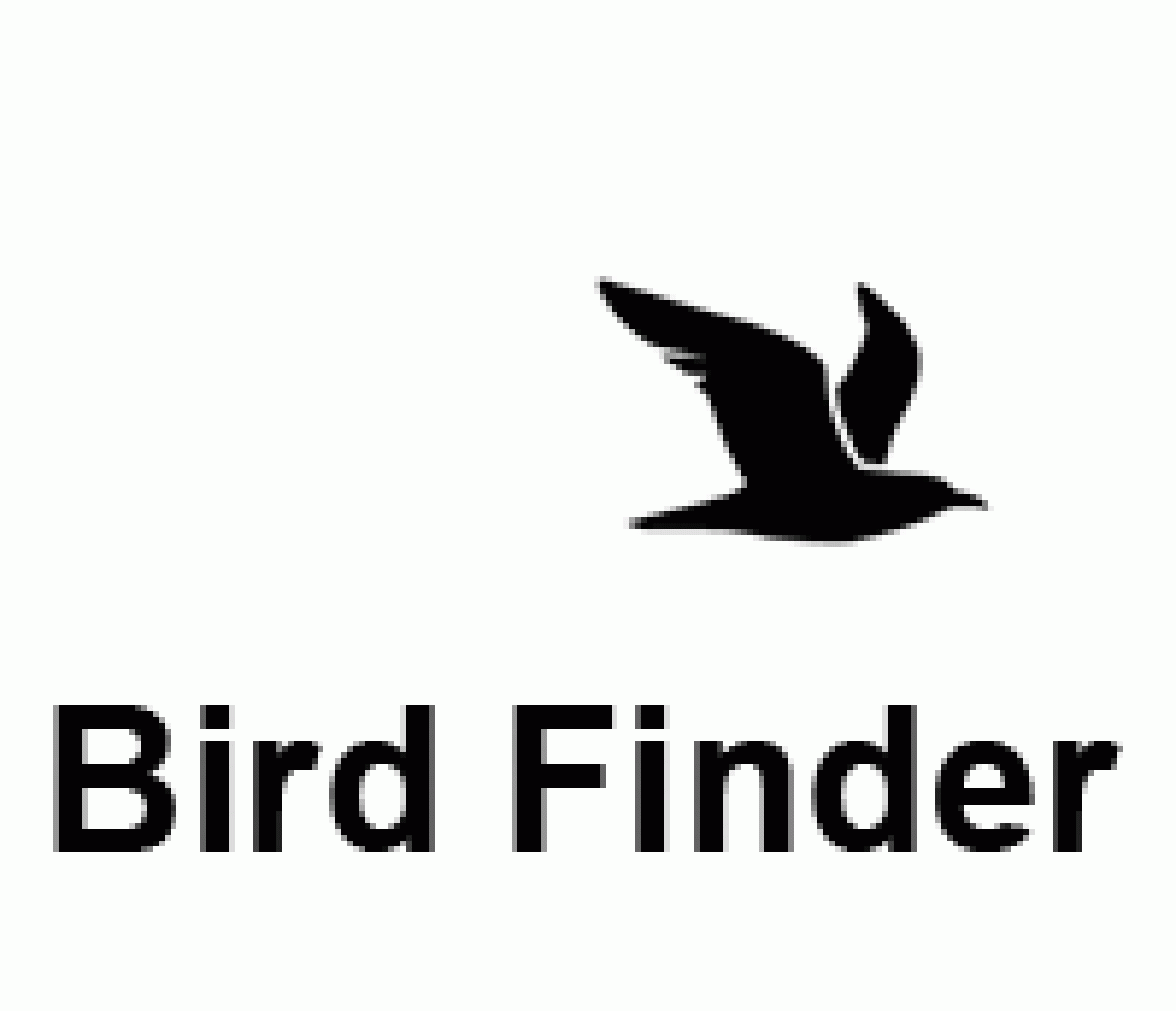
With Bird Finder you can locate and learn about birds in the southwest. The collection has almost 300 birds. There are images, range maps, and their songs and calls. You can also select and compare different birds.
Be Part of
Ask A Biologist
By volunteering, or simply sending us feedback on the site. Scientists, teachers, writers, illustrators, and translators are all important to the program. If you are interested in helping with the website we have a Volunteers page to get the process started.


